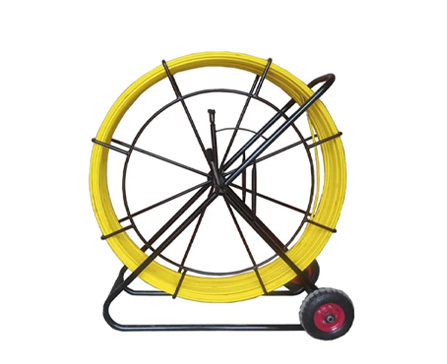
-
 Afrikaans
Afrikaans -
 Albanian
Albanian -
 Amharic
Amharic -
 Arabic
Arabic -
 Armenian
Armenian -
 Azerbaijani
Azerbaijani -
 Basque
Basque -
 Belarusian
Belarusian -
 Bengali
Bengali -
 Bosnian
Bosnian -
 Bulgarian
Bulgarian -
 Catalan
Catalan -
 Cebuano
Cebuano -
 Corsican
Corsican -
 Croatian
Croatian -
 Czech
Czech -
 Danish
Danish -
 Dutch
Dutch -
 English
English -
 Esperanto
Esperanto -
 Estonian
Estonian -
 Finnish
Finnish -
 French
French -
 Frisian
Frisian -
 Galician
Galician -
 Georgian
Georgian -
 German
German -
 Greek
Greek -
 Gujarati
Gujarati -
 Haitian Creole
Haitian Creole -
 hausa
hausa -
 hawaiian
hawaiian -
 Hebrew
Hebrew -
 Hindi
Hindi -
 Miao
Miao -
 Hungarian
Hungarian -
 Icelandic
Icelandic -
 igbo
igbo -
 Indonesian
Indonesian -
 irish
irish -
 Italian
Italian -
 Japanese
Japanese -
 Javanese
Javanese -
 Kannada
Kannada -
 kazakh
kazakh -
 Khmer
Khmer -
 Rwandese
Rwandese -
 Korean
Korean -
 Kurdish
Kurdish -
 Kyrgyz
Kyrgyz -
 Lao
Lao -
 Latin
Latin -
 Latvian
Latvian -
 Lithuanian
Lithuanian -
 Luxembourgish
Luxembourgish -
 Macedonian
Macedonian -
 Malgashi
Malgashi -
 Malay
Malay -
 Malayalam
Malayalam -
 Maltese
Maltese -
 Maori
Maori -
 Marathi
Marathi -
 Mongolian
Mongolian -
 Myanmar
Myanmar -
 Nepali
Nepali -
 Norwegian
Norwegian -
 Norwegian
Norwegian -
 Occitan
Occitan -
 Pashto
Pashto -
 Persian
Persian -
 Polish
Polish -
 Portuguese
Portuguese -
 Punjabi
Punjabi -
 Romanian
Romanian -
 Russian
Russian -
 Samoan
Samoan -
 Scottish Gaelic
Scottish Gaelic -
 Serbian
Serbian -
 Sesotho
Sesotho -
 Shona
Shona -
 Sindhi
Sindhi -
 Sinhala
Sinhala -
 Slovak
Slovak -
 Slovenian
Slovenian -
 Somali
Somali -
 Spanish
Spanish -
 Sundanese
Sundanese -
 Swahili
Swahili -
 Swedish
Swedish -
 Tagalog
Tagalog -
 Tajik
Tajik -
 Tamil
Tamil -
 Tatar
Tatar -
 Telugu
Telugu -
 Thai
Thai -
 Turkish
Turkish -
 Turkmen
Turkmen -
 Ukrainian
Ukrainian -
 Urdu
Urdu -
 Uighur
Uighur -
 Uzbek
Uzbek -
 Vietnamese
Vietnamese -
 Welsh
Welsh -
 Bantu
Bantu -
 Yiddish
Yiddish -
 Yoruba
Yoruba -
 Zulu
Zulu


Sep . 11, 2024 12:40 Back to list
Hose Machine Crimping Solutions | Precision Crimping Equipment
Hose machine crimping is an essential process in the manufacturing and maintenance of hoses used across various industries. These machines are designed to create secure and reliable connections between hoses and fittings, ensuring that they can handle high pressures and operate effectively within the systems they serve. Understanding the importance, process, and types of hose machine crimping can greatly enhance efficiency and safety in industrial applications.
At the core of hose machine crimping is the crimping mechanism, which compresses the metal fitting onto the hose. This is typically achieved using a hydraulic system that applies significant force, allowing the fitting to grip the hose tightly. This secure connection is crucial, especially in applications where hoses are exposed to high pressures or harsh environmental conditions. A poor crimp can lead to hose failure, potentially causing leaks, equipment damage, or safety hazards.
The process of crimping involves several steps. First, the hose and fitting are selected based on the specific application requirements, considering factors such as temperature, pressure, and fluid compatibility. Next, the hose is cut to the appropriate length, and the fitting is prepared for crimping. The hose is then inserted into the fitting, and the crimping machine is activated. The machine’s calibrated pressure ensures a uniform and consistent crimp, vital for maintaining the integrity of the hose assembly.
hose machine crimping

There are various types of crimping machines available, each designed for different hose sizes and materials. Manual crimpers are suitable for smaller applications and are often used in workshops or for field repairs. On the other hand, automated and hydraulic crimpers are designed for high-volume production environments, delivering speed and precision with minimal operator intervention.
Hose machine crimping also requires proper training and expertise. Operators must be knowledgeable about the different hose specifications, fittings, and the capabilities of their crimping machines. Regular maintenance and calibration of the machines are also vital to ensure they remain accurate and effective over time.
In conclusion, hose machine crimping is a specialized process that plays a crucial role in ensuring the reliability and safety of hydraulic and pneumatic systems. By utilizing the right equipment and techniques, industries can improve their operational efficiency and reduce the risk of equipment failures. As technology advances, the future of crimping machines promises even greater precision and automation, paving the way for enhanced performance in hose assembly processes.
Latest news
What Are Construction Tools and How Are They Used?
NewsJul.11,2025
Professional-Grade Duct Rodding Tools for Superior Cable Installation
NewsJul.11,2025
Enhancing Safety and Efficiency with Modern Hot Stick Solutions
NewsJul.11,2025
Empowering Cable Installation with Advanced Rodder Solutions
NewsJul.11,2025
Elevate Your Cable Installation Projects with Cable Pulling Tools
NewsJul.11,2025
Efficient Cable Handling Solutions: Cable Rollers for Sale
NewsJul.11,2025











